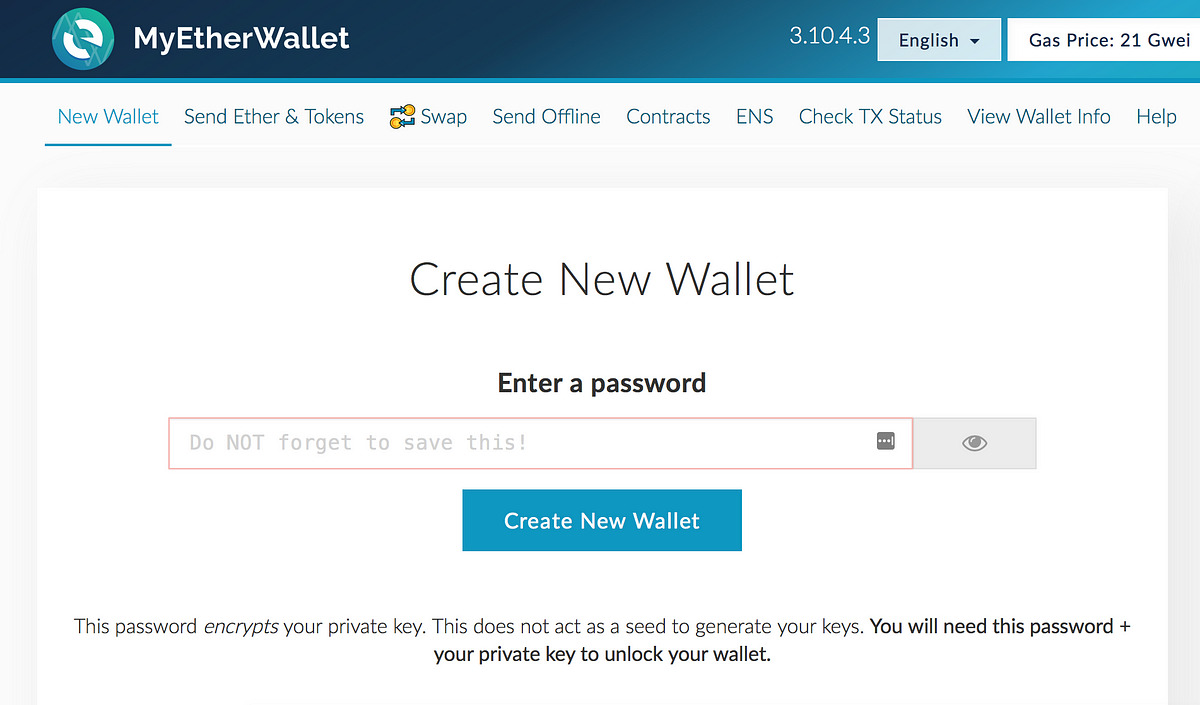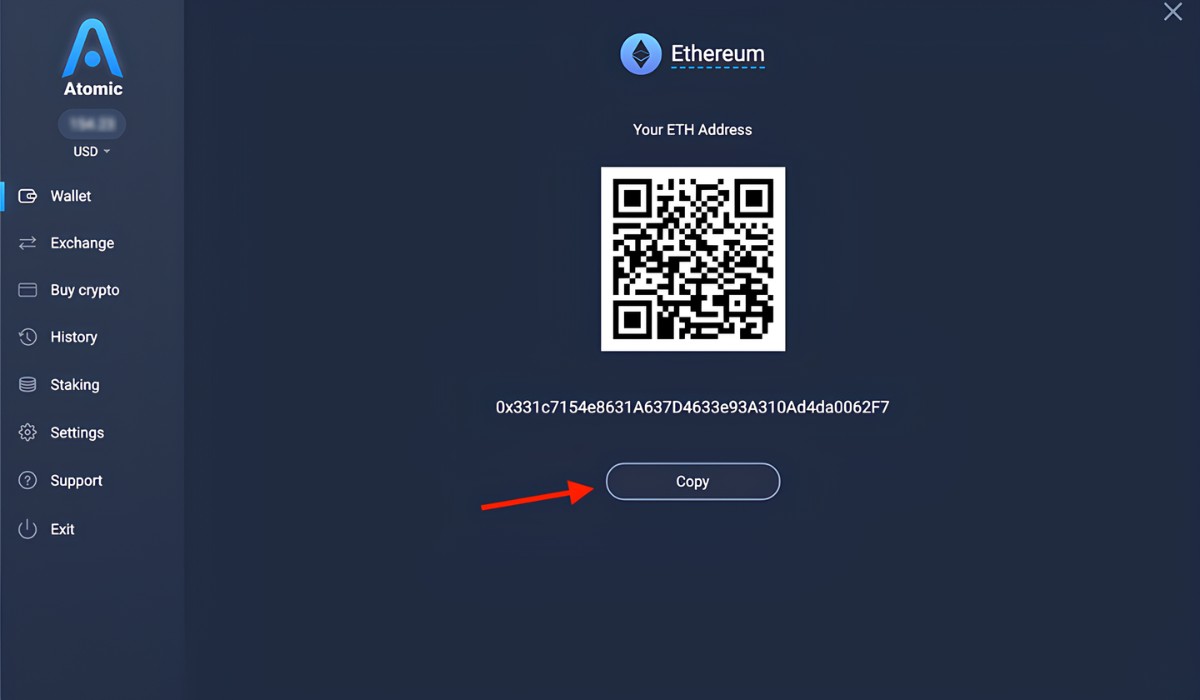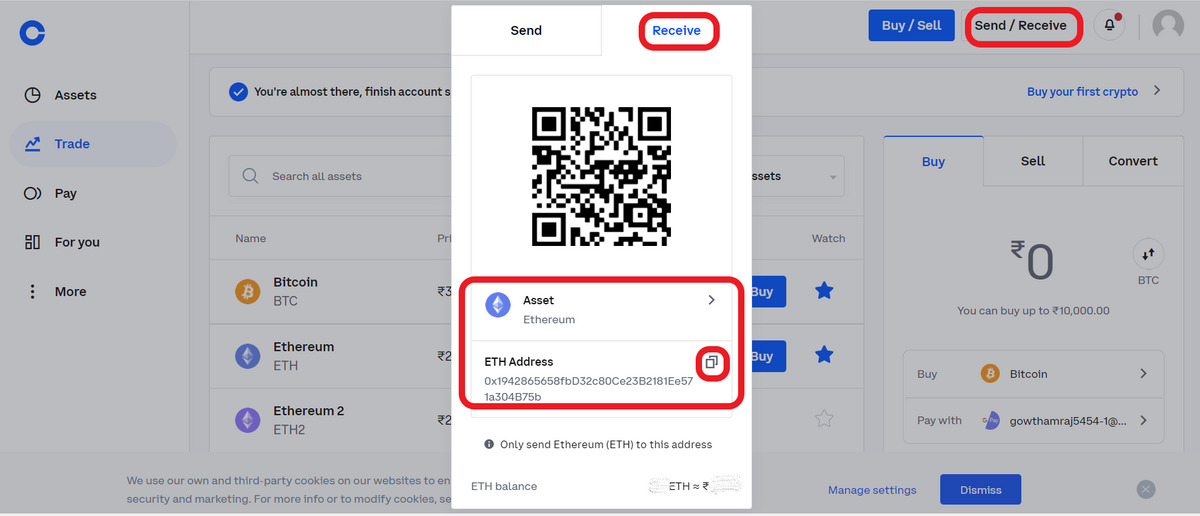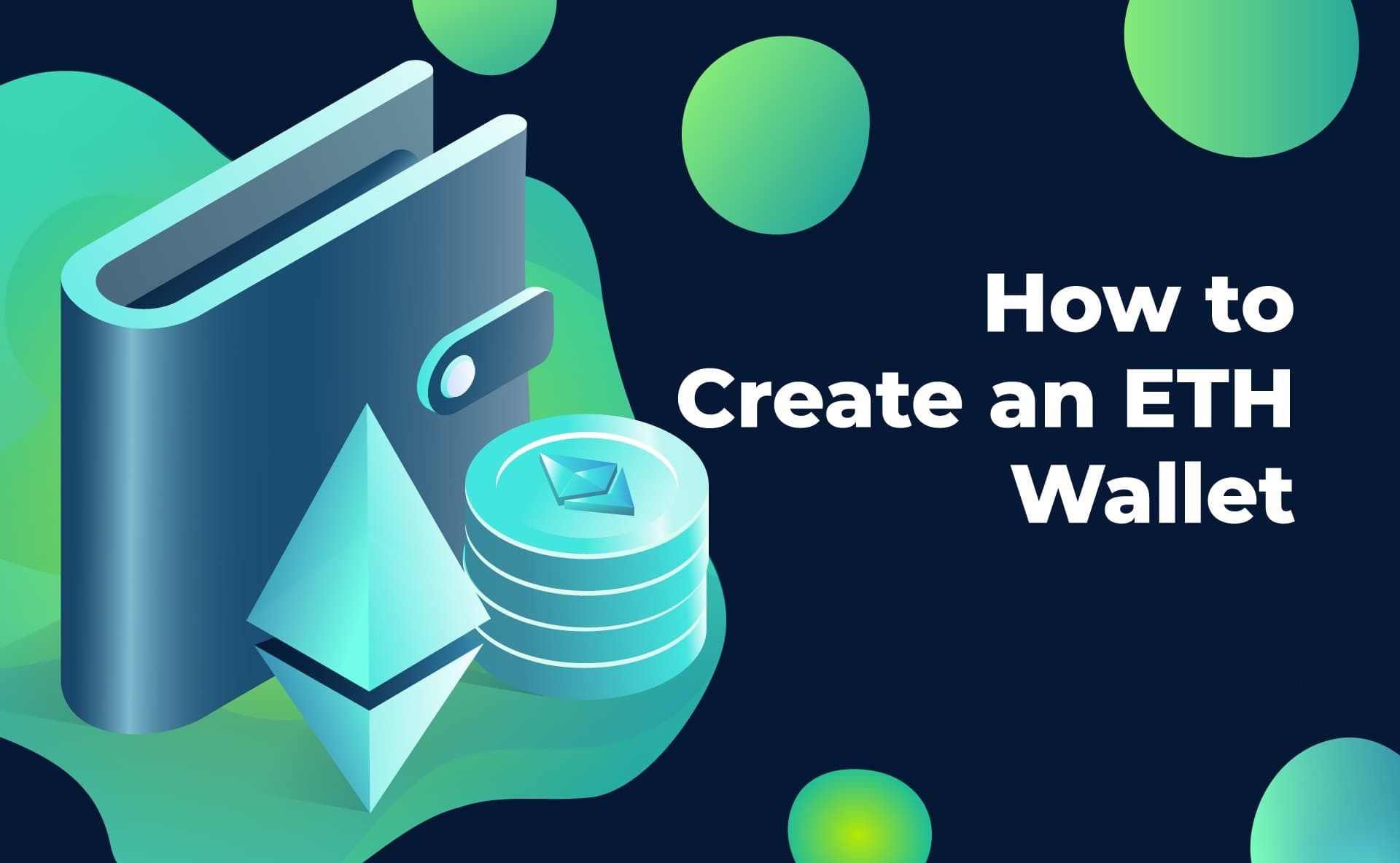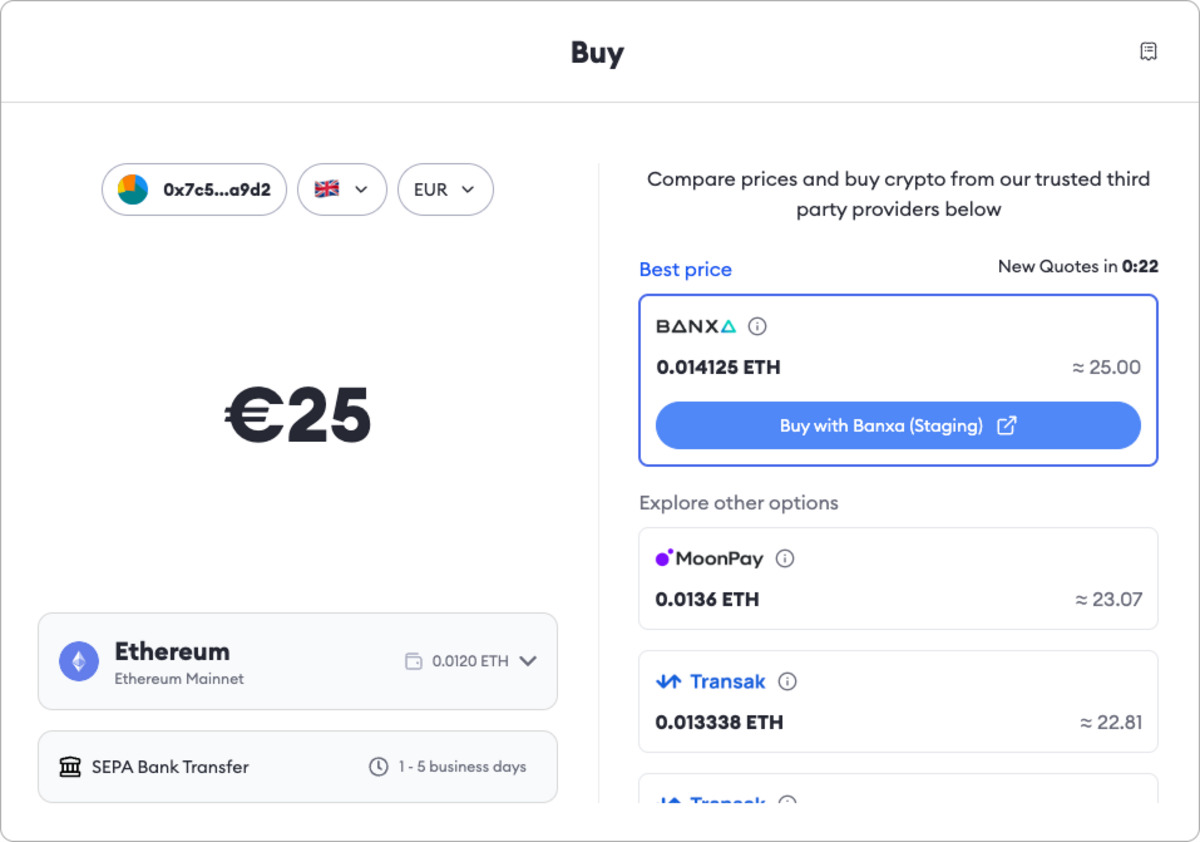Introduction
Welcome to the world of cryptocurrencies, where digital assets are traded using secure and decentralized blockchain technology. One of the most popular and widely used cryptocurrencies is Ethereum. As an Ethereum enthusiast, you might be wondering how to start safely storing and managing your Ethereum assets. The answer lies in getting an Ethereum wallet.
An Ethereum wallet is a software application that allows you to securely store, send, and receive Ethereum. It serves as a digital wallet, similar to a traditional wallet, but specifically designed for Ethereum and other cryptocurrencies built on the Ethereum blockchain.
Having an Ethereum wallet is essential if you plan to participate in the Ethereum ecosystem. Whether you are buying, selling, or using Ethereum for decentralized applications, having a wallet is crucial for managing your funds and maintaining control over your digital assets.
In this guide, we will explore the different types of Ethereum wallets available, discuss the importance of choosing the right one, and provide a step-by-step guide on how to create and secure your Ethereum wallet.
Before we dive into the details, it is important to note that while Ethereum wallets provide a secure way to store your digital assets, they do not actually store the Ethereum itself. Instead, they store the private keys that allow you to access and manage your Ethereum. These private keys are what give you ownership and control over your digital assets on the Ethereum blockchain.
Now that we have a basic understanding of what an Ethereum wallet is and its importance, let’s explore the different types of wallets available to help you choose the right one for your needs.
What is an Ethereum Wallet?
An Ethereum wallet is a software application that allows you to securely store, send, and receive Ethereum. It acts as a digital wallet for your Ethereum and provides you with a unique address, similar to a bank account number, which you can use to send and receive Ethereum transactions.
Think of an Ethereum wallet as a digital vault where you can store your Ethereum assets. Just like you need a physical wallet to hold your cash and credit cards, you need an Ethereum wallet to hold your digital assets.
When you create an Ethereum wallet, you are assigned a pair of cryptographic keys – a public key and a private key. Your public key is the address that you share with others to receive Ethereum, while your private key is a unique secret code that allows you to access and manage your Ethereum holdings.
It is important to note that your private key should remain confidential and should never be shared with anyone. If someone gains access to your private key, they can gain control over your Ethereum assets.
Ethereum wallets come in various forms, including desktop wallets, mobile wallets, web-based wallets, and hardware wallets. Each type of wallet has its own set of features, advantages, and security considerations.
Some Ethereum wallets offer additional features, such as integration with decentralized applications (DApps) and the ability to stake Ethereum for earning rewards. It is essential to choose a wallet that aligns with your specific needs and provides the necessary security measures to protect your assets.
Now that we have a clear understanding of what an Ethereum wallet is, let’s delve into why having an Ethereum wallet is crucial for anyone involved in the Ethereum ecosystem.
Why Do I Need an Ethereum Wallet?
If you are interested in utilizing Ethereum for various purposes, having an Ethereum wallet is essential. Here are several reasons why you need an Ethereum wallet:
Secure Storage: By having an Ethereum wallet, you can securely store your Ethereum assets. Unlike keeping your Ethereum on an exchange, where they are vulnerable to hacking or theft, an Ethereum wallet allows you to have full control over your funds and keep them in a secure environment.
Transaction Flexibility: With an Ethereum wallet, you can send and receive Ethereum transactions at any time, without relying on a centralized authority. This gives you the freedom to engage in peer-to-peer transactions, participate in Initial Coin Offerings (ICOs), or interact with decentralized applications.
Decentralized Applications: Ethereum serves as the foundation for countless decentralized applications that are transforming various industries. By having an Ethereum wallet, you can access and interact with these applications, ranging from decentralized finance (DeFi) protocols to gaming and digital collectibles.
Investment Opportunities: If you believe in the potential of Ethereum as a long-term investment, having a wallet allows you to hold and manage your Ethereum holdings. You can track the value of your assets and make informed decisions about buying or selling Ethereum based on market conditions.
Rewards and Staking: Some Ethereum wallets support staking, a process where you lock up your Ethereum to support the network and earn rewards in return. With an Ethereum wallet, you can participate in staking initiatives and contribute to the security and decentralization of the Ethereum blockchain.
Privacy and Control: Using an Ethereum wallet ensures your privacy and control over your transactions. Unlike traditional banking systems, which require revealing personal information, Ethereum transactions can be conducted pseudonymously, allowing you to maintain your privacy while still participating in the global economy.
By having an Ethereum wallet, you empower yourself with the ability to engage in the Ethereum ecosystem in a secure and decentralized manner. It gives you control over your funds, access to a wide range of applications, and the opportunity to participate in the growth of Ethereum and its associated projects.
Now that we understand why having an Ethereum wallet is crucial, let’s explore the different types of Ethereum wallets available for you to choose from.
Types of Ethereum Wallets
When it comes to Ethereum wallets, there are several types to choose from, each offering its own set of features and security considerations. Here are the most common types of Ethereum wallets:
- Desktop Wallets: Desktop wallets are software applications that you download and install on your computer. They provide you with complete control over your private keys and allow you to securely manage your Ethereum assets. Desktop wallets are recommended for those who prioritize security and are comfortable with managing software installations.
- Mobile Wallets: Mobile wallets are applications that you can install on your smartphone or tablet. They offer convenience and accessibility, allowing you to manage your Ethereum on the go. Mobile wallets are suitable for users who want quick and easy access to their Ethereum and prefer the mobility offered by smartphones.
- Web-Based Wallets: Web-based wallets, also known as online wallets, are accessible through a web browser. They offer convenience and ease of use, as they can be accessed from any device with an internet connection. However, web-based wallets come with higher security risks compared to desktop or hardware wallets, as they rely on the security measures of the hosting platform.
- Hardware Wallets: Hardware wallets are physical devices specifically designed for securely storing cryptocurrencies. They store your private keys offline and provide an extra layer of security by keeping your keys disconnected from the internet. Hardware wallets are considered the most secure option for storing Ethereum, as they protect your private keys from potential online threats.
- Paper Wallets: Paper wallets involve printing out your Ethereum public and private keys onto a physical piece of paper. This method is completely offline, making it highly secure against online attacks. However, paper wallets require careful handling to avoid loss or damage, and they may be more suitable for long-term storage rather than frequent transactions.
While the above-listed wallets are the most common, it’s important to note that there are other types of wallets available, such as multi-signature wallets and hardware wallet integrations with mobile or desktop applications. Each type of wallet has its own advantages, so it’s important to choose the one that aligns with your security needs, accessibility preferences, and usage patterns.
Now that we’ve explored the different types of Ethereum wallets, the next step is to understand how to choose the right wallet that suits your specific requirements. Let’s dive into the factors to consider when selecting an Ethereum wallet.
How to Choose the Right Ethereum Wallet
Choosing the right Ethereum wallet is crucial for the security and accessibility of your Ethereum assets. Here are some factors to consider when deciding on the right Ethereum wallet for your needs:
- Security: Security should be your top priority when selecting an Ethereum wallet. Look for wallets that offer robust security features, such as encryption, two-factor authentication, and the ability to control your private keys. Wallets that store your private keys offline, like hardware wallets, offer an extra layer of protection.
- User-Friendliness: Consider your level of technical expertise and choose a wallet that matches your comfort level. Some wallets prioritize simplicity and ease of use, while others offer more advanced features that may require some technical knowledge. Opt for a wallet that provides a user-friendly interface and a seamless user experience.
- Compatibility: Ensure that the wallet you choose is compatible with your preferred device or operating system. Check if the wallet supports your computer’s operating system, mobile device, or web browser before making a decision. Compatibility ensures that you can access your Ethereum wallet conveniently.
- Backup and Recovery: Look for wallets that offer backup and recovery options. It’s essential to have a backup of your private keys or seed phrases in case you lose access to your wallet or encounter any issues. Wallets that provide backup and recovery features enable you to restore your wallet and regain control over your Ethereum assets.
- Development Community: Assess the development community behind the wallet. A large and active community signifies that the wallet is well-supported, regularly updated, and continuously improving its features and security measures. Active development ensures a secure and reliable wallet experience.
- Additional Features: Consider any additional features or integrations offered by the wallet. Some wallets support decentralized applications (DApps) and allow you to interact with the Ethereum ecosystem in various ways. Evaluate whether these additional features align with your interests and usage requirements.
By considering these factors, you can make an informed decision and choose an Ethereum wallet that meets your security needs, usability preferences, and technological capabilities. Once you’ve selected the right wallet, the next step is to create and secure your Ethereum wallet. In the next section, we’ll provide a step-by-step guide to help you with this process.
Step-by-Step Guide to Creating an Ethereum Wallet
Creating an Ethereum wallet is a straightforward process that allows you to securely store and manage your Ethereum assets. Follow these steps to create your Ethereum wallet:
- Step 1: Choose a Wallet Provider: Decide on the wallet provider that suits your needs. Consider factors such as security features, user-friendliness, and compatibility. Popular wallet providers include MetaMask, MyEtherWallet, Trust Wallet, and Ledger.
- Step 2: Visit the Wallet Provider’s Website: Go to the official website of your chosen wallet provider. Ensure that you are on the correct website to avoid phishing scams or downloading fake wallet applications.
- Step 3: Download or Install the Wallet: Depending on the type of wallet you’ve chosen, you may need to download and install the wallet application on your computer or mobile device. Follow the instructions provided by the wallet provider to complete the installation process.
- Step 4: Create a New Wallet: Once the wallet application is installed, look for an option to create a new wallet. Click on this option to initiate the wallet creation process. You may be asked to choose a strong password or passphrase to secure your wallet.
- Step 5: Backup your Wallet: Most wallet applications will prompt you to create a backup of your wallet. Follow the instructions carefully to create a backup of your wallet’s private keys or seed phrase. Store this backup in a safe and offline location, such as a hardware wallet or a piece of paper kept in a secure place.
- Step 6: Confirm your Backup: Some wallet applications may require you to confirm your backup by entering certain words or phrases from your backup. This step ensures that you have correctly recorded and stored your backup information.
- Step 7: Secure your Wallet: Take additional security measures to protect your wallet. Enable two-factor authentication if available, and consider using a hardware wallet for an extra layer of security. Avoid sharing your private keys or seed phrase with anyone and be cautious of phishing attempts.
- Step 8: Receive and Send Ethereum: Once your wallet is set up and secured, you can now receive and send Ethereum. Your wallet will provide you with a unique Ethereum address that you can share with others to receive Ethereum. To send Ethereum, enter the recipient’s Ethereum address and the amount you wish to send.
Following these steps will help you create your Ethereum wallet and ensure that your funds are secured. Remember to keep your wallet application and any associated backup information up to date and protected. In the next section, we will discuss additional measures you can take to further secure your Ethereum wallet.
Securing your Ethereum Wallet
Securing your Ethereum wallet is of utmost importance to protect your funds from potential threats and unauthorized access. Here are some essential steps you can take to enhance the security of your Ethereum wallet:
- Choose a Strong Password: Use a strong and unique password for your wallet. Include a combination of uppercase and lowercase letters, numbers, and special characters. Avoid using easily guessable passwords and never use the same password for multiple accounts.
- Enable Two-Factor Authentication (2FA): Many wallet applications offer the option to enable 2FA. This adds an extra layer of security to your account by requiring a second form of verification, such as a code generated by an authenticator app or received via SMS. Enable this feature to protect your wallet from unauthorized access.
- Keep Your Software Updated: Regularly update your wallet application and device’s operating system to ensure you have the latest security patches. Developers frequently release updates that address any potential vulnerabilities and enhance the security of the wallet.
- Use Hardware Wallets: Consider using a hardware wallet, such as a Ledger or Trezor device, for enhanced security. Hardware wallets store your private keys offline, keeping them safe from online threats. These devices require physical confirmation for transactions, providing an added layer of protection.
- Be Wary of Phishing Attempts: Stay vigilant against phishing attempts to avoid falling victim to scams. Be cautious of suspicious emails, links, or websites that ask for your wallet information. Always verify the authenticity of the source before entering any sensitive information.
- Backup Your Wallet: Create a backup of your wallet’s private keys or seed phrase and store it in a secure location. Having a backup ensures that you can recover your funds if you lose access to your wallet. Consider using offline methods, such as storing the backup on paper or a hardware wallet, to minimize the risk of it being compromised.
- Secure Your Device: Keep your device protected from viruses and malware by using reputable antivirus software. Avoid downloading files or software from untrusted sources, and practice good browsing habits by staying away from suspicious websites.
- Use Cold Storage: For long-term storage of large amounts of Ethereum, consider using cold storage options. Cold storage keeps your private keys offline, away from potential online threats. Examples of cold storage include hardware wallets and paper wallets.
- Be cautious with Public Wi-Fi: Avoid accessing your wallet or making transactions using public Wi-Fi networks. Public networks are often unsecured, and your data can be intercepted by attackers. Use trusted and secure networks when accessing your wallet.
By following these security measures, you can significantly reduce the risk of unauthorized access and ensure the safety of your Ethereum assets. It’s essential to stay informed about the latest security practices and remain vigilant to protect your wallet and funds.
Backing up your Ethereum Wallet
Backing up your Ethereum wallet is crucial to ensure that you can recover your funds in case of device loss, damage, or any other unforeseen circumstances. Here are the key steps to effectively back up your Ethereum wallet:
- Keep Multiple Copies: Create multiple backups of your wallet’s private keys or seed phrase. This allows you to have redundant copies in case one backup gets lost or damaged. Store your backups in separate physical locations to minimize the risk of losing them all at once.
- Choose a Secure Storage Method: Consider using offline storage methods for your backups, such as storing them on a hardware wallet, writing them down on paper, or engraving them on metal. Offline storage significantly reduces the risk of your backup being compromised by online threats.
- Use Encryption: If you choose to store your backup digitally, make sure to encrypt it with a strong password. This adds an extra layer of security to your backup, ensuring that even if it falls into the wrong hands, they won’t be able to access your private keys without the password.
- Test your Backup: After creating your backup, it is a good practice to test its validity. Use a separate device or wallet application to restore your wallet using the backup. Ensure that you can successfully regain access to your Ethereum funds using the backup information.
- Update your Backup Regularly: As you make new transactions or generate new public-private key pairs, make sure to update your backup. Regularly creating new backups ensures that you can recover your complete wallet and access your most recent funds if needed.
- Keep your Backup Offline and Secure: If you choose to store your backup digitally, keep it on an offline device, such as a USB drive or external hard drive. Store it in a secure and non-obvious location to prevent unauthorized access. Avoid storing backups on cloud-based platforms that could be vulnerable to hacking or third-party breaches.
- Store Backup Information Securely: If you decide to write down your backup or store it in physical format, keep it in a safe and secure place. Consider using a fireproof and waterproof container or a secure safe to protect your backup from physical damage or theft.
- Update your Backup Strategy: Regularly assess and update your backup strategy as new technologies or security practices emerge. Stay informed about the best practices for securing your Ethereum wallet and adjust your backup procedures accordingly.
Backing up your Ethereum wallet is essential to safeguard your funds and ensure that you can regain control over your assets if any unforeseen circumstances occur. By following these steps and maintaining updated backups, you can have peace of mind knowing that your Ethereum wallet is secure.
Accessing and Using Your Ethereum Wallet
Once you have created and secured your Ethereum wallet, you can start accessing and using it to manage your Ethereum assets. Here are the key steps to access and use your Ethereum wallet:
- Launch the Wallet Application: Open the wallet application on your device. Depending on the type of wallet you are using, you might need to enter your password or provide any necessary verification methods to access your wallet.
- Connect your Hardware Wallet (if applicable): If you are using a hardware wallet, connect it to your computer or mobile device using the provided USB cable or wireless connection. Follow the instructions provided by the hardware wallet manufacturer for proper connection.
- Enter your Wallet Credentials: Depending on the wallet application, you may need to enter your wallet credentials, such as your password or passphrase, to unlock and access your wallet’s features and functionalities.
- View your Ethereum Balance: Once you have successfully accessed your wallet, you will be able to view your Ethereum balance. The wallet application will display the total amount of Ethereum you currently hold.
- Send Ethereum: To send Ethereum, locate the option or button within the wallet application that allows you to initiate a transaction. Enter the recipient’s Ethereum address, specify the amount you wish to send, and review the transaction details before confirming the transaction.
- Receive Ethereum: To receive Ethereum, provide the sender with your Ethereum address. Your Ethereum address is unique to your wallet and serves as the destination for incoming Ethereum transactions. Double-check the accuracy of your Ethereum address before sharing it with others.
- Track Transaction History: Most wallet applications provide a transaction history feature that allows you to track and review all the transactions associated with your Ethereum wallet. You can view details such as transaction amounts, sender/receiver addresses, and timestamps.
- Manage Other Assets: Some Ethereum wallets support other assets built on the Ethereum blockchain, such as ERC-20 tokens. If you hold any of these tokens, your wallet application may offer functionality to manage and interact with them, including sending and receiving transactions.
- Stay Updated: Regularly check for wallet application updates and new features. Developers often release updates to improve security, add new functionalities, and enhance the user experience. Keeping your wallet application updated ensures that you benefit from the latest improvements and security enhancements.
By following these steps, you can easily access and use your Ethereum wallet to manage your Ethereum assets. Remember to exercise caution when sending or receiving transactions, double-check addresses, and stay vigilant against potential security risks.
Conclusion
Obtaining an Ethereum wallet is a crucial step for anyone interested in securely storing, sending, and receiving Ethereum. With numerous types of wallets available, you can choose the one that aligns with your security requirements, usability preferences, and accessibility needs.
Throughout this guide, we discussed the importance of an Ethereum wallet and its role in the Ethereum ecosystem. We explored the various types of wallets, including desktop wallets, mobile wallets, web-based wallets, hardware wallets, and paper wallets.
We also provided a step-by-step guide to help you create your Ethereum wallet and emphasized the significance of backing up your wallet to protect your funds against loss or damage.
Securing your Ethereum wallet is of utmost importance. By implementing security measures such as using strong passwords, enabling two-factor authentication, keeping your wallet and device software up to date, and being cautious of phishing attempts, you can safeguard your Ethereum assets.
Once your wallet is secured, you can access and utilize it to send and receive Ethereum, track transactions, and manage other Ethereum-based assets. Regularly update your wallet application and stay informed about the latest practices to ensure the security and usability of your Ethereum wallet.
Now that you have a clear understanding of Ethereum wallets and the necessary steps to create, secure, and use them, you are ready to dive into the exciting world of Ethereum. Start exploring decentralized applications, investing in Ethereum, and participating in the growing Ethereum ecosystem with confidence.







